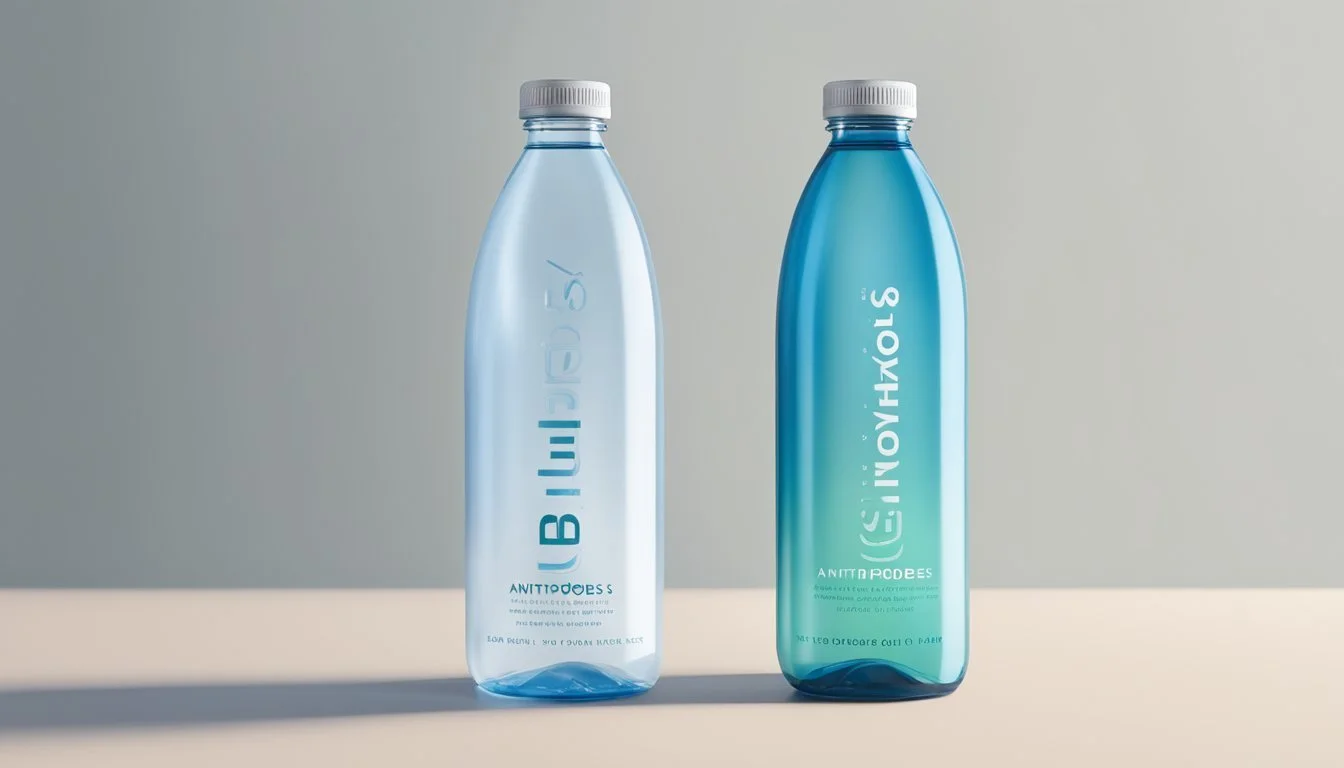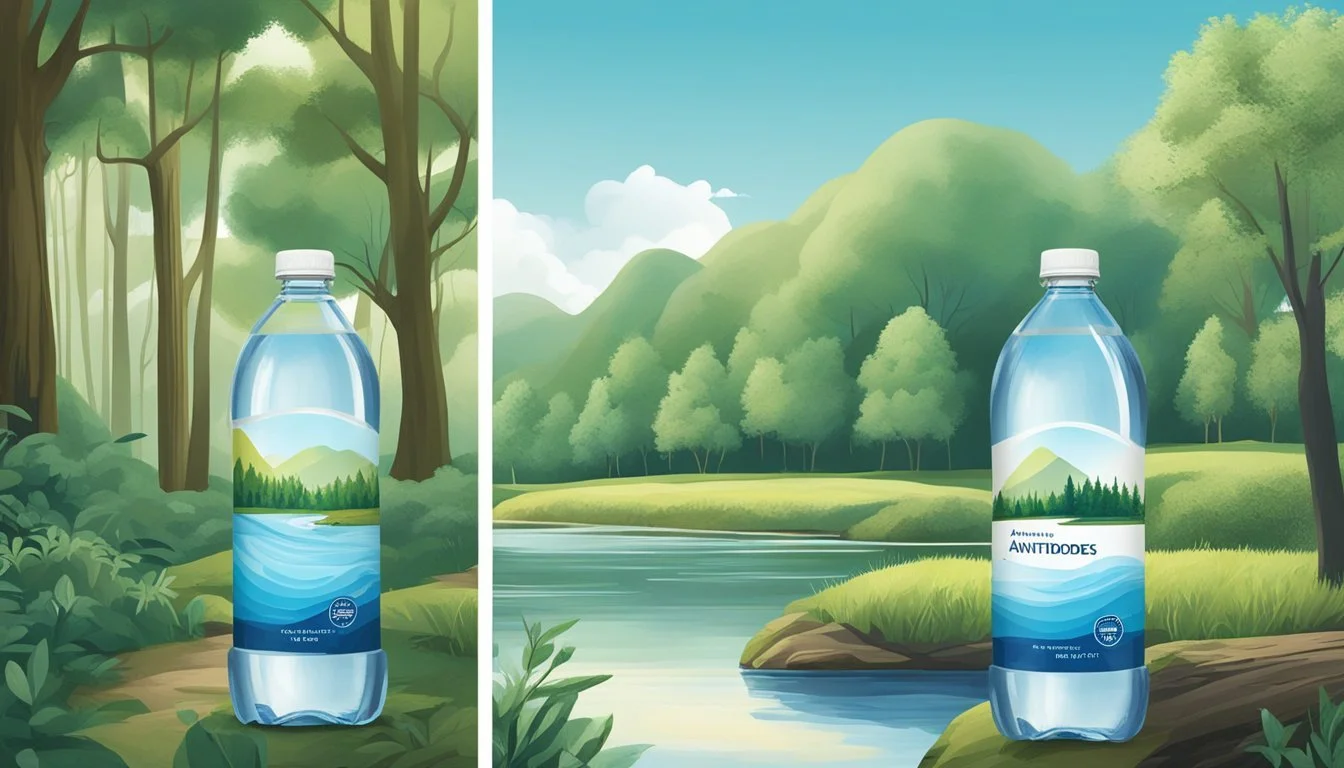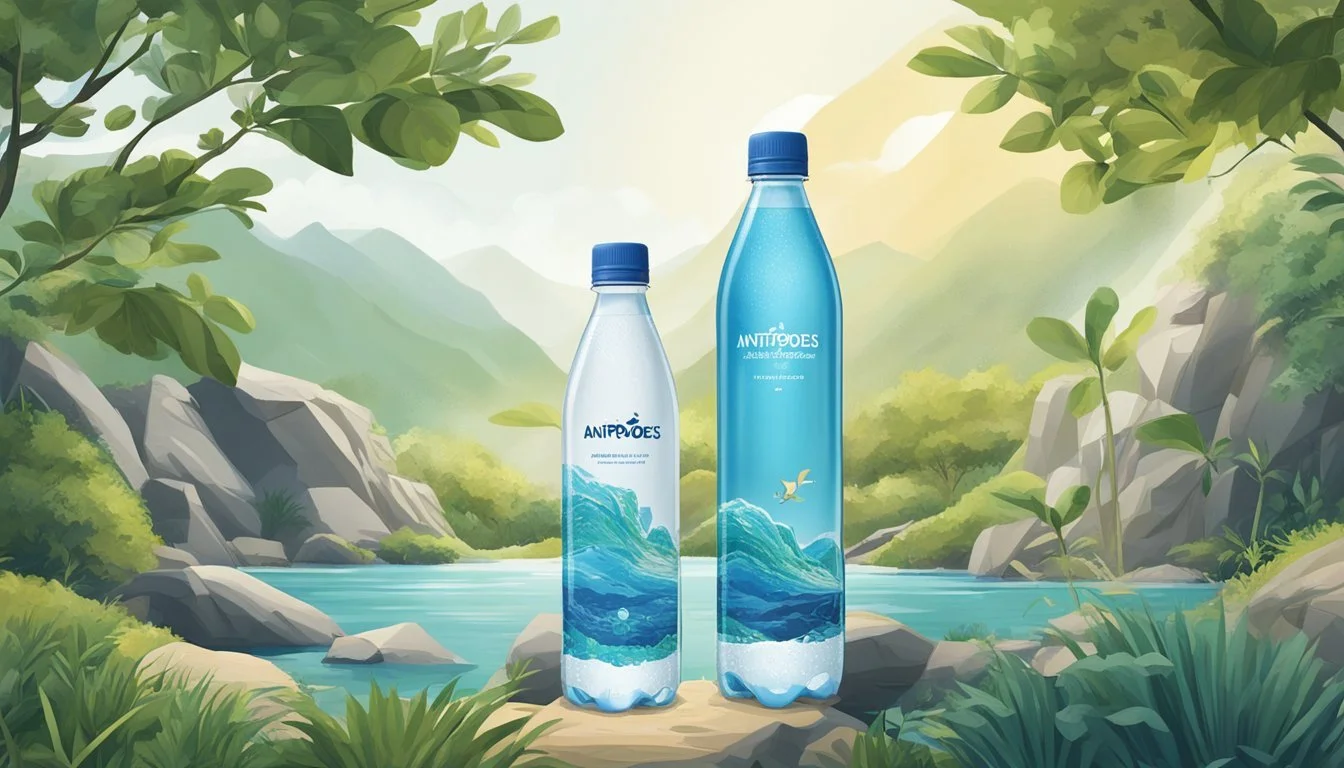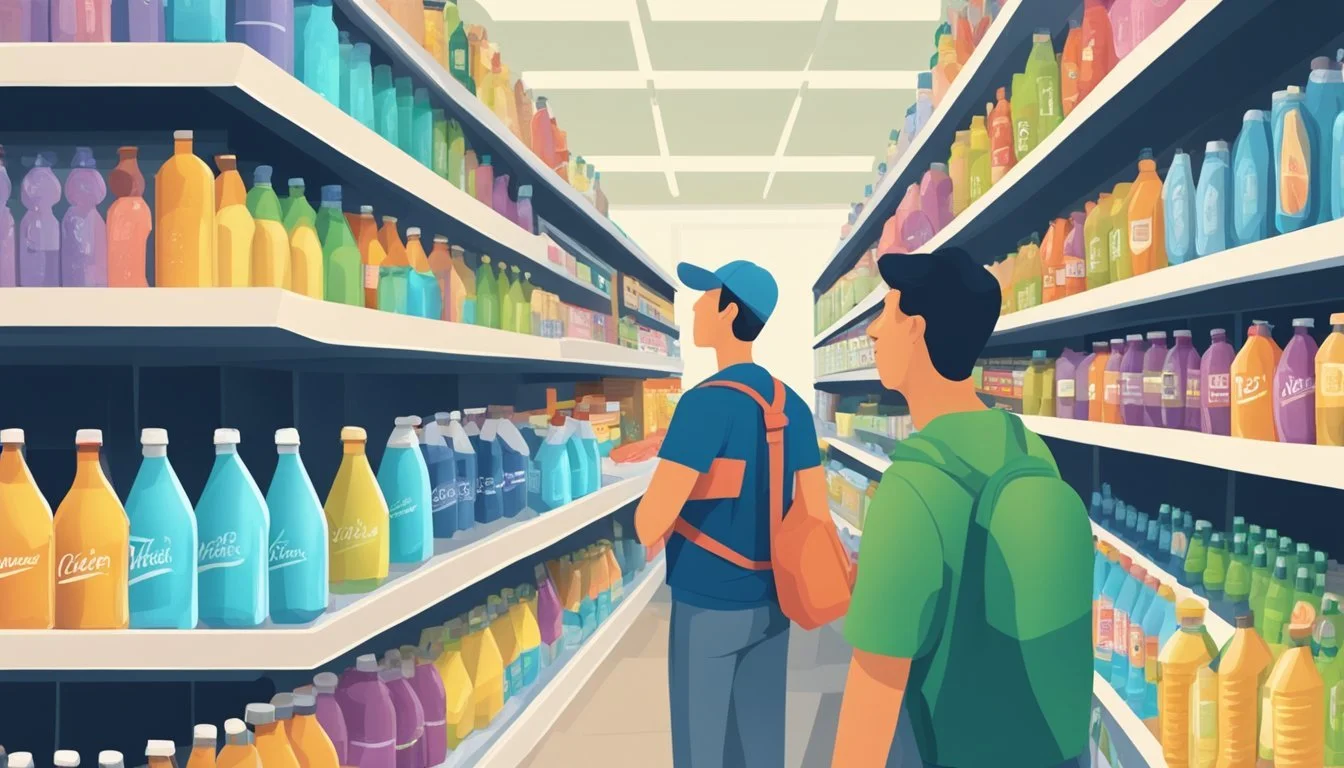Antipodes vs. Path
Which Bottled Water is Better for You?
When it comes to bottled water, consumers often look for quality, taste, and purity. Two prominent brands, Antipodes and Path, have garnered significant attention. Antipodes, sourced from New Zealand, boasts a pristine reputation with its natural mineral content and crisp, clean taste. Path, known for its sustainable packaging and commitment to the environment, offers a responsible choice without compromising quality.
Both brands excel in different areas, making the decision a matter of personal preference and values. If you're seeking unparalleled purity and taste, Antipodes might be your go-to choice, while Path’s eco-friendly packaging and solid taste offer a compelling alternative. Readers will find that selecting between Antipodes and Path involves weighing the importance of taste, mineral content, and environmental impact.
Understanding Bottled Water
Bottled water comes in various types, each with different sources, processing methods, and health benefits. It's essential to understand these differences to make an informed decision.
Definitions and Types of Bottled Water
Bottled water: This is water sealed in plastic or glass bottles for personal use. It can come from a variety of sources and undergo different treatment processes.
Mineral water: Contains minerals or other dissolved substances that alter its taste. Sourced from mineral springs, it often has a higher mineral content than other types.
Spring water: Drawn directly from a natural spring, this water typically undergoes minimal processing. It retains naturally occurring minerals, making it a popular choice for those seeking purity.
Purified water: This water has been processed to remove impurities. Methods include distillation, deionization, and reverse osmosis. It generally lacks the minerals found in spring or mineral waters.
Alkaline water: This type has a higher pH level than regular tap water, usually due to added minerals. It's believed to neutralize acid in the body, offering various health benefits.
Health Benefits of Quality Bottled Water
Mineral content: Mineral water is rich in essential minerals like calcium and magnesium. These minerals can support bone health and cardiovascular function.
Purity: Spring water and purified water offer high purity levels, reducing the risk of contaminants. This can be particularly beneficial for individuals with weakened immune systems.
Digestive aid: Alkaline water may aid digestion by neutralizing stomach acid. Some believe it helps relieve acid reflux symptoms, although scientific evidence is mixed.
Convenience: Bottled water is convenient and portable. For those without access to clean tap water, it provides a reliable hydration source.
The health benefits and convenience of bottled water make it a practical choice for many. Understanding the specific characteristics and origins of different types helps ensure you select the best option for your needs.
Brand Profiles
Antipodes and Path are two well-regarded bottled water brands, each with distinct origins and features that cater to different consumer needs and values.
Antipodes - Origin and Distinctiveness
Antipodes bottled water originates from a pristine aquifer in New Zealand. This aquifer, renowned for its purity, provides water that is not only clean but light and refreshing.
The brand is known for its high-quality, glass bottle packaging, which underscores its premium positioning. At approximately $7 per liter, Antipodes may be seen as an indulgence, yet many consider the taste and quality worth the cost.
The water's relatively neutral pH, combined with a smooth texture, makes it a standout choice for those discerning consumers who prioritize purity and taste.
Path - Mission and Features
Path aims to provide a sustainable and cost-effective alternative in the bottled water market. Its mission focuses heavily on environmental responsibility, reflected in its choice of aluminum bottles.
Aluminum is not only reusable but also infinitely recyclable, making Path a leader in eco-friendly practices. The brand highlights its commitment to reducing plastic waste, which aligns with growing consumer environmental concerns.
Path's water is sourced from locations that meet rigorous Environmental Protection Agency (EPA) standards, ensuring quality and safety. This brand's dedication to sustainability and quality makes it a strong contender for environmentally-conscious consumers.
Evaluating Water Quality
When it comes to choosing between Antipodes and Path bottled waters, understanding their water quality is essential. Key factors include pH levels, mineral content, taste profiles, and safety standards regarding contaminants.
pH Levels and Mineral Content
Antipodes and Path differ notably in pH levels and mineral composition. Antipodes has a balanced pH ranging from 7.5 to 8.0, making it slightly alkaline which may aid in neutralizing acidity in the body. Its mineral content includes calcium, magnesium, and potassium, contributing to its health benefits.
Path, on the other hand, emphasizes sustainability while maintaining water quality. Its pH varies between 7.3 to 7.7, with a mineral profile focused on balancing electrolytes. Minerals such as sodium and calcium are present, enhancing hydration.
Taste Profile Comparisons
The taste of bottled water can be significantly influenced by its source and mineral content. Antipodes is sourced from deep aquifers and is known for its crisp, clean taste with a subtle mineral finish. Consumers often describe it as refreshing and smooth, making it a favorite among many.
Path provides a different tasting experience. Its neutral pH and balanced mineral content give it a mild flavor. Some users appreciate its straightforward taste, free from strong mineral notes. This makes it suitable for those who prefer a subtle and understated water flavor.
Safety: Contaminants and Regulations
Safety and purity are crucial for bottled water. Antipodes undergoes rigorous testing to ensure it meets all safety standards. It is free from contaminants such as nitrate and lead, complying with both local and international regulations, making it safe for daily consumption.
Path also prioritizes safety by adhering to strict standards. It promotes transparency by providing detailed water quality reports. This ensures consumers that it is free from harmful contaminants. Both brands are committed to providing safe drinking water, aligning with the highest health standards.
Comparison Table: Key Features
Feature Antipodes Path pH Level 7.5 - 8.0 7.3 - 7.7 Mineral Content Calcium, Magnesium, Potassium Sodium, Calcium Source Deep Aquifers Various Sources Safety Standards High High
Understanding the distinct qualities of Antipodes and Path aids in making an informed decision based on individual preferences and health considerations.
Environmental and Health Considerations
When comparing Antipodes and Path bottled water, it's essential to consider their environmental impact and health implications. These factors play a crucial role in making an informed choice.
Impact of Bottles on the Environment
Plastic pollution remains a significant concern with bottled water. Single-use plastic bottles contribute to massive plastic waste, adversely affecting the planet. Antipodes bottles are marketed as BPA-free and recyclable, yet their use still adds to overall plastic waste.
Alternatively, Path aims to minimize its environmental footprint by using aluminum bottles, which are more easily recyclable. Aluminum's recyclability reduces its impact on the environment compared to traditional plastic. Both brands try to reduce plastic pollution, but the choice of materials plays a significant role in their ecological impact.
Reusable vs. Single-Use Bottles
Antipodes focuses on providing high-quality water in recyclable plastic bottles. However, these are typically single-use, adding to environmental waste after disposal. Despite being recyclable, the recycling rate for plastics remains relatively low, contributing to ongoing environmental concerns.
Path, on the other hand, promotes the use of reusable aluminum bottles. Reusability reduces the need for frequent disposal and diminishes single-use plastic waste. This approach provides a more sustainable option. The durability of aluminum bottles allows prolonged use, supporting a reduction in plastic pollution and promoting a more eco-friendly hydration choice.
Packaging and Sustainability
The environmental impact of bottled water largely depends on the materials used in packaging and the brand's commitment to sustainability. Both Antipodes and Path have taken significant steps towards eco-friendly packaging.
Innovations in Eco-Friendly Packaging
Antipodes uses glass bottles which are 100% recyclable and maintain the purity of the water. Glass does not emit harmful chemicals, making it a safe and durable packaging option. However, glass bottles are heavier, which can increase carbon emissions during transportation.
Path uses aluminum bottles designed to be refillable and infinitely recyclable. This innovation helps reduce the waste associated with single-use plastic bottles. Path’s bottles are also lightweight compared to glass, which can further decrease the environmental footprint related to shipping.
Water Brands' Stance on Sustainability
Antipodes is committed to sustainability, aligning with guidelines from the Environmental Protection Agency. They focus on carbon-neutral initiatives and environmental protection efforts, ensuring that their production processes and packaging are eco-friendly.
Path actively promotes the reduction of single-use plastics through their refillable bottles. Their operations aim to become carbon-neutral after just three uses of their bottles. Additionally, Path provides Hydration Stations to encourage the reuse of bottles and reduce plastic waste, showcasing their strong stance on sustainability.
Both brands highlight the importance of responsible packaging, but their approaches and materials differ, reflecting their unique strategies in addressing environmental concerns. By selecting innovative packaging materials and promoting sustainable practices, they aim to mitigate the ecological impact of bottled water.
Consumer Experience
When comparing Antipodes and Path bottled waters, consumers often assess factors such as convenience, lifestyle compatibility, availability, and accessibility.
Convenience and Lifestyle Factors
Many consumers appreciate the convenience of bottled water, particularly when they lead active lifestyles. Antipodes, known for its premium packaging, appeals to those who value aesthetic and quality. The sleek design fits comfortably in most cup holders, gym bags, and handbags, making it ideal for on-the-go hydration.
Path, on the other hand, emphasizes sustainability. Its bottles are designed to be refillable, which can be a great choice for environmentally-conscious consumers. Reusable bottles are convenient for refilling at home, gyms, and workplaces. This aspect is particularly appealing to families with children, who benefit from the ease of refilling rather than constantly buying new bottles.
Availability and Accessibility
Accessibility differs significantly between the two brands. Antipodes is a premium brand, often found in higher-end grocery stores, restaurants, and bars. It sometimes poses a challenge for regular consumers due to its limited distribution in everyday markets.
Path, with its focus on everyday use, is more readily available in a wide range of locations, from grocery stores to vending machines. This widespread availability makes it a convenient option for a quick purchase.
Price also plays a role in accessibility. Antipodes is marketed at a higher price point, reflecting its premium positioning. Path's competitive pricing makes it a more accessible choice for general consumption.
Economic Analysis
When comparing Antipodes and Path, it's essential to examine the costs associated with each brand and the various price factors that impact consumer purchasing decisions. This involves analyzing retail prices, production costs, and distribution efficiency.
Cost Comparison Between Brands
Antipodes is generally priced at a premium level compared to Path. Antipodes's higher cost can be attributed to its branding as a luxury product and the sourcing from pristine underground springs in New Zealand. Path, marketed as a sustainable option, offers a more competitive price point.
Considering popular brands like Dasani, Aquafina, LIFEWTR, and Smartwater, Antipodes aligns more with LIFEWTR and Smartwater due to its upscale positioning. Path, on the other hand, competes with Dasani and Aquafina, focusing more on affordability and widespread availability.
Maintaining transparency in cost comparisons reveals that production methods and sourcing significantly impact prices. The detailed breakdown includes the storage and efficient transportation costs, making certain brands more economical.
Price Factors for Consumers
Several factors influence the price consumers pay for bottled water. Brand reputation, source, packaging material, and retail markup all play critical roles. Antipodes's glass bottles, eco-friendly packaging, and exclusive source contribute to its higher shelf price.
Conversely, Path utilizes cost-efficient production practices and materials, such as using sustainable packaging, to keep prices lower. For consumers, convenience and availability considerably impact choice.
Retailers often include costs for distribution and marketing in the final price. Efficient transportation means lower costs, which brands like Path capitalize on to offer competitive prices. Shoppers must weigh these factors to determine the best value for money in their preferences.
By breaking down these elements, consumers gain a clearer insight into what drives the prices of Antipodes and Path, aiding in informed purchasing decisions.
Market Trends and Consumer Preferences
In recent years, the bottled water market has seen significant growth driven by consumer demands for convenience and perceived quality. Consumers often base their choices on factors like taste, safety, and packaging.
The Rise of Bottled Water Consumption
Bottled water consumption has surged over the past decade. Many consumers prefer it due to the belief that it tastes better and is safer than tap water. Statistics show that brands like Nestle Pure Life, Deer Park, and CORE Hydration dominate the market.
The rising trend is also influenced by lifestyle changes. People on-the-go find single-use bottled water more convenient despite the push for sustainable solutions like reusable bottled water. This preference is supported by market studies highlighting the importance of convenience in consumer choices.
Brand Loyalty and Market Share
Brand loyalty plays a crucial role in the bottled water industry. Many consumers stick to brands they trust, such as Voss and Nestle Pure Life, leading to substantial market shares for these companies. Surveys indicate that 72% of Americans are influenced by packaging, particularly its eco-friendliness.
Transparency about the water source and mineral content also affects preferences. Brands emphasizing high-quality water and clear information about their source often attract a loyal customer base. Thus, transparency and sustainable packaging are pivotal in maintaining consumer trust and expanding market share.







